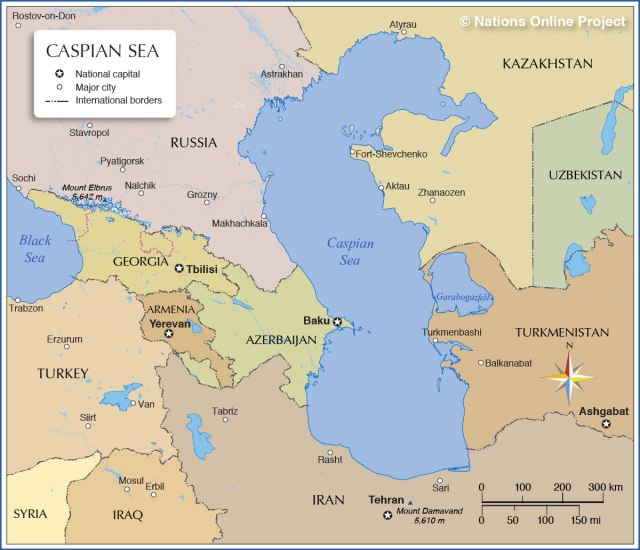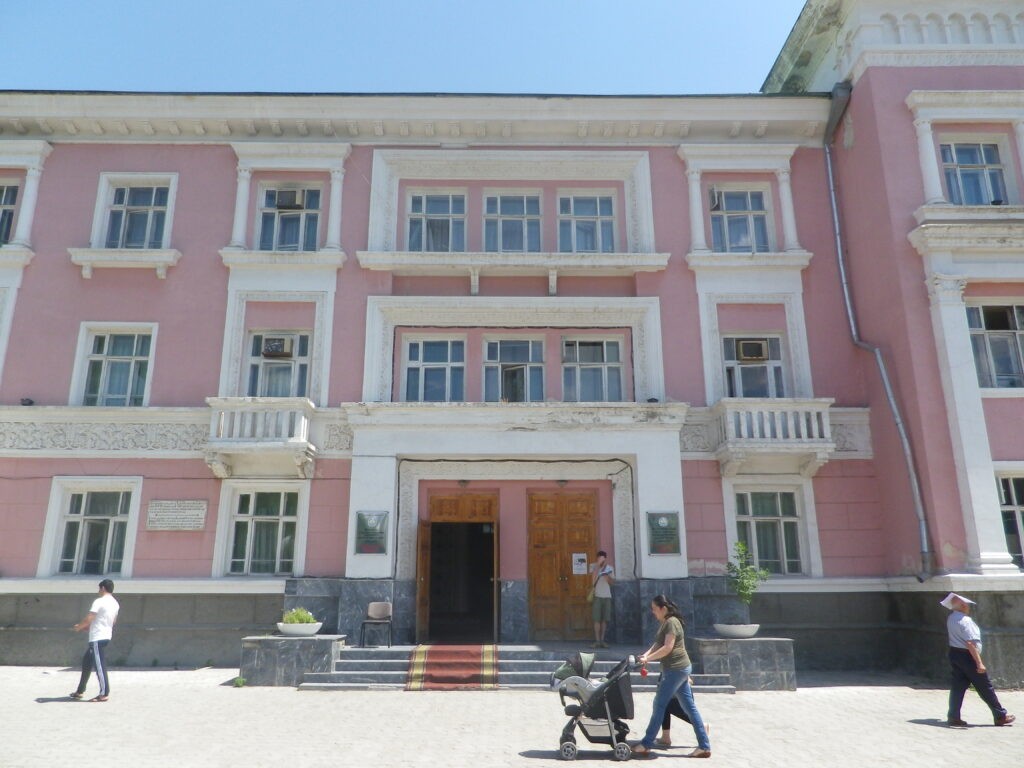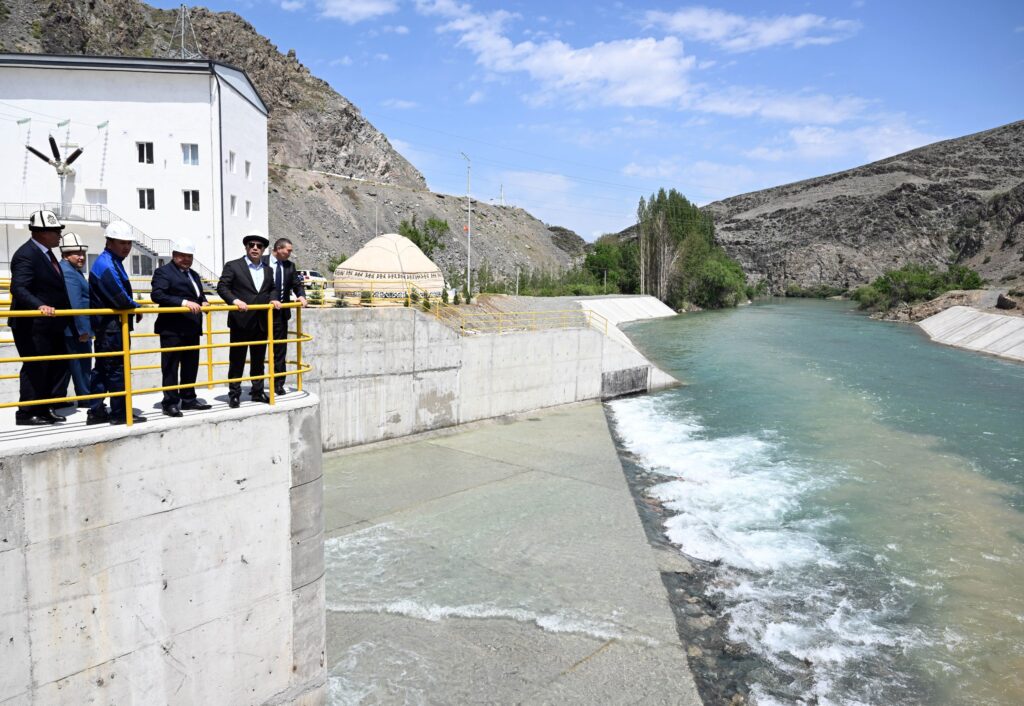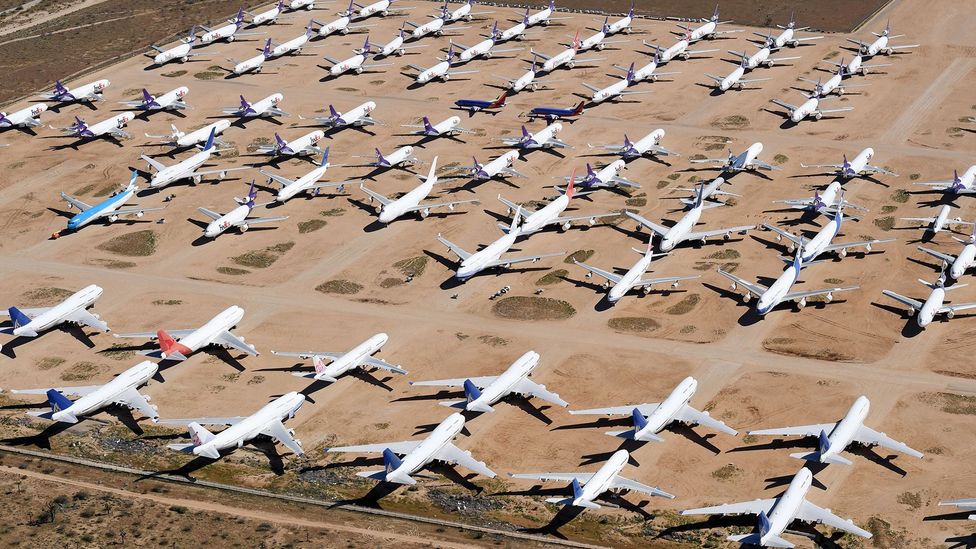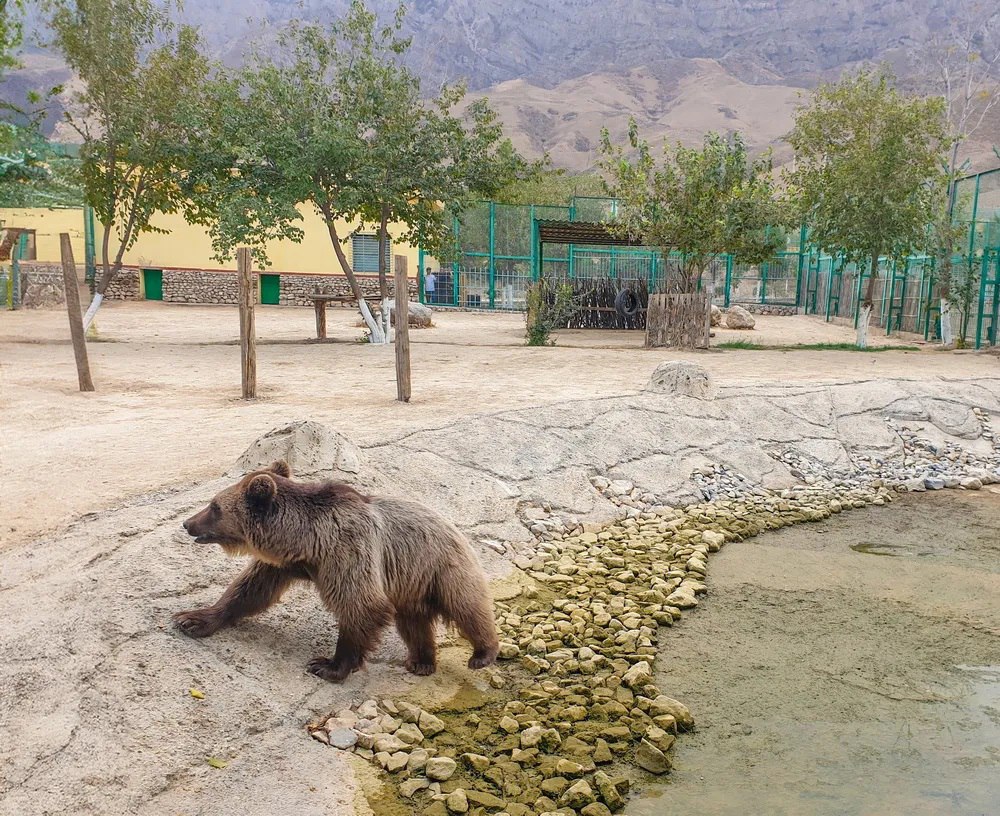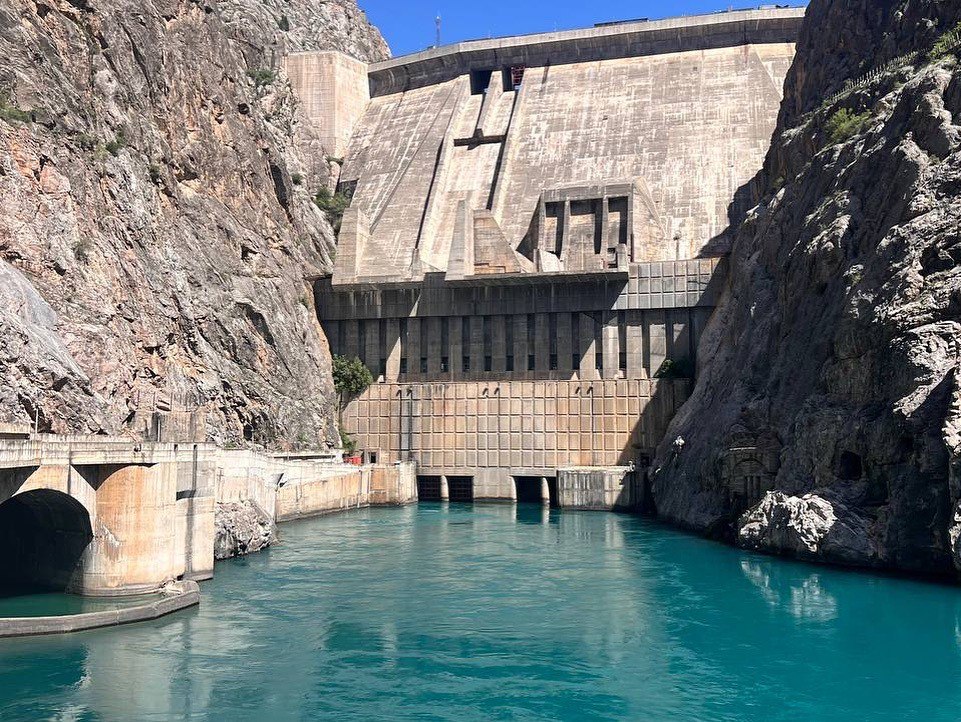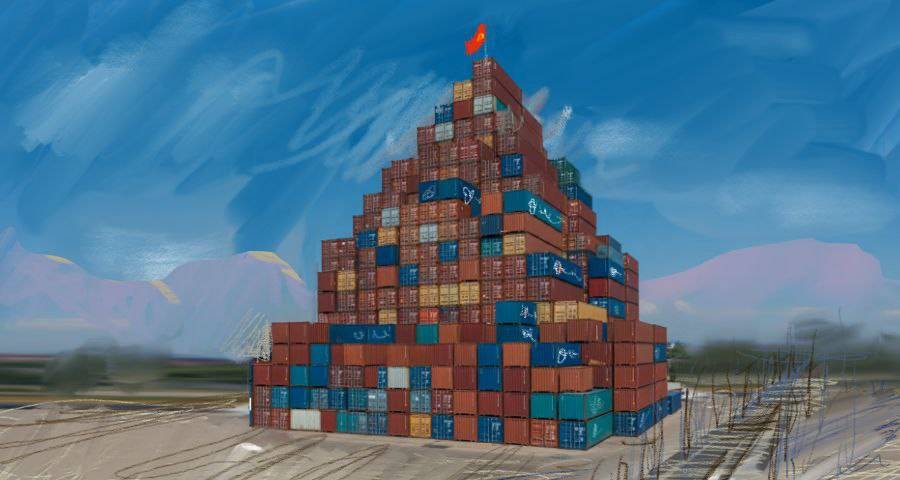LONDON (TCA) — A fair division of the Caspian seabed including exploitation rights has been subject to debate for a quarter of a century now, with time and again the governments of littoral states — Azerbaijan, Iran, Kazakhstan, Turkmenistan, and Russia — assuring that they were on the brink of clinching a comprehensive agreement. At the bottom of the dispute is the question whether or not the Caspian waters should be seen as a lake or a sea. In the former case, international law requires a convention signed by all littoral states, dividing the entire waterbed into sections. The sea-option prescribes that each coastal state has authority over the waters down to 20 nautical miles from the shore, beyond which navigation is free and fishing and other exploitation rights should be either unlimited or defined by either bi- or multilateral agreements.
A short background
Back in 1921, the demarcation of the territorial waters in the Caspian consisted of a straight line between the Turkmen-Iranian coastal border post of Hasangulu and that of Astara between Iran and Azerbaijan, which only just then had adhered to the Soviets. After the break-up of the USSR, Russia was pushing for the “sea” option in the beginning until 1997 when President Boris Yeltsin all of a sudden shifted to a “lake-type” division marked by a curved north-south line along the thalweg, i.e. the curve marking the middle of the Caspian between the coastal lines.
The proposal was contested, the same year, by Turkmenistan’s President Saparmurat Niyazov, who wanted a straight north-south line, almost doubling its waters including a number of oil fields belonging to Azerbaijan. In particular the new proposal involved the oil fields under the international consortium AIOC, operated by BP, and a separate field to its east named Kapaz (re-dubbed Serdar by Niyazov) to be operated by a tandem consisting of the Azeri state oil company SOCAR and Russia’s Rosneft.
A new pragmatic approach
While the other three coastal states roughly adhered to the new Russian proposal, Turkmenistan has only recently given in – not in the least because income derived from offshore oil exploitations has plummeted to less than half of what it used to be since 2014. It made players in the conflict pragmatic, driven by tight belts in terms of cash provisions.
Russia and Kazakhstan signed an agreement on the delimitation of the northern part of the Caspian Sea in order to exercise sovereign rights for subsoil use in July 1998. The two countries ratified the deal in May 2002.
Kazakhstan and Azerbaijan signed an agreement on the delimitation of the Caspian Sea and ratified it in November 2001 and February 2003, respectively. Kazakhstan, Azerbaijan and Russia signed an agreement on the delimitation of adjacent sections of the Caspian Sea on May 14, 2003. In 2004 Kazakhstan and Turkmenistan also signed an agreement to define their territorial waters, but it took a decade to get it ratified and came into effect in 2015.
Iranian demands
This left only Iran with demands conflicting with those now met by other states – except for Azerbaijan and Turkmenistan which have yet to agree on the maritime borderline between their sections of the Caspian Sea. As for Iran, it proposes to divide the Caspian waters into five zones of equal size. This would increase Iran’s share which since 1921 only stands at 13 per cent, to the detriment of the Azeris and the Turkmens. This has driven Ashgabat into the arms of its fellow ex-Soviet republics, and left Iran standing alone. As usual, nothing of the kind ever happened. What did happen is that all foreign companies involved in operations within the potential conflict zone withdrew from their projects, including BP, the Royal Dutch Shell and Total of France.
New plans
Iran has recently expressed plans to engage Turkmenistan in its attempts to start up exploration in its coastal waters, and to assist the Turkmens technically and financially to boost exploration in on- and offshore border zones. It received a most willing ear in Ashgabat. Moreover, Iran’s state oil company has a 10 per cent share in Azerbaijan’s Shah Deniz offshore gas venture, on which it earns considerable sums. Tehran’s leaders are bound to realize that losing their heads over demarcation lines is simply not worth the price Iran would have to pay for it.
Natural tectonic structure
The Caspian tectonic structure is divided into three sections. The northernmost one is characterized by salt domes which harbor its immensely rich hydrocarbon deposits. It is separated from the central section’s narrow and shallow depression by a sharp uplift. The central section, which holds hydrocarbon and uranium reserves at medium depths, is flanked by another uplift which separates it from the southern parts, which form the most difficult area for drillers. Its northern half is marked by two anticlinal uplifts one of which is home to the AIOC’s deposits while the other one has been virtually unexplored; it is not even sure where it ends somewhere between the middle line and the Turkmen shore.
South of these, the Caspian basin has been left unexplored except for a number of test drillings none of which resulted in any bounty. Geologists tend to agree that whatever stake Iran claims and eventually gets, hopes for rich oil reserves are close to zero and those for gas remote.
Physically and commercially speaking, Iran’s “interest” in the Caspian is thin air and Tehran has started to realize it and opt for solutions to the academic side of the conflict likewise.
